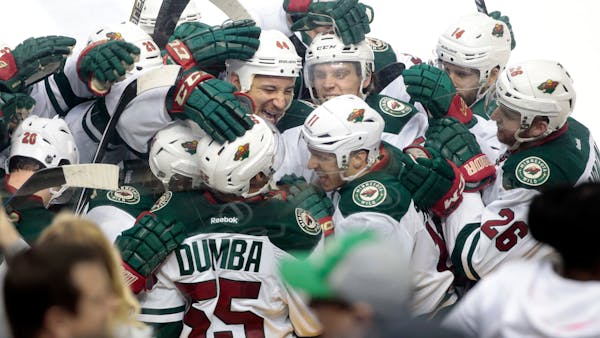NASHVILLE – Trying to reduce the number of games decided in shootouts, the NHL looks like it will have 3-on-3 action in overtime next season.
It still must be reviewed and approved in June by the NHL-NHLPA's Competition Committee and NHL Board of Governors, but the NHL's general managers meeting in Boca Raton, Fla., are trying to mirror a significant decrease in shootouts in the American Hockey League this season.
In the AHL, overtimes are now seven minutes. Overtime starts 4-on-4, and then after the first whistle following the three-minute mark, action is changed to 3-on-3 until the duration of the period.
Last season, 64.7 percent of AHL games that went to overtime ended in a shootout (178 of 275). This season, that has been reduced to 23.7 percent (53 of 224). This season, of the 171 goals scored in AHL overtimes, 98 came in 4-on-4 and 73 in 3-on-3 (51 of those goals were scoring in the six- and seven-minute marks).
Of the 257 NHL games sent to overtime this season, 57.2 percent (147) ended in a shootout. The NHL hasn't determined what model it plans to implement, but Wild players and coaches are in favor of 3-on-3.
"I believe in anything to end it not in a shootout and not in a tie," said Zach Parise, whose 38 career shootout goals are the third most in the NHL behind Jonathan Toews' 40 and Mikko Koivu's 39. "It'll be fun to play and probably be fun to watch too. Rush, turnover, rush."
Tactically and systematically, coach Mike Yeo says it'll be interesting to see it in action.
"It's new to all of us. We deal so little with it," Yeo said.
Even goalie Devan Dubnyk is a proponent, although he hopes the league separates 3-on-3 statistics from a goaltender's overall statistics the way it does with shootout. That isn't the case in the AHL.
"If you have guys in a lot of 3-on-3s compared to other goalies, it'll significantly affect goals against and save percentage," Dubnyk said.
The GMs also recommended a limited coach's challenge for goals scored on potential goalie interference and delay of game penalties for pucks shot over the glass. In order to issue a challenge, a team still must have its timeout. The team keeps the timeout if it wins the challenge. The refs will have access to the replay in consultation with the NHL's Situation Room.
"I'm all for it. I think it's good for the game," Yeo said. "If a call's made, you want it to be the right one. I know the refs want that, I know the league wants that as well."
Defensive shuffle
With left-shot defensemen Marco Scandella and now Nate Prosser sidelined, Yeo was forced to juggle his defense pairs Tuesday against the Predators.
Left-shot No. 1 defense partners Ryan Suter and Jonas Brodin were split, with Jared Spurgeon moving to the right side of Suter and Brodin playing the left side of Matt Dumba. Jordan Leopold was paired with Christian Folin, who was scratched the previous four games.
Prosser could be sidelined a month, but Yeo said Scandella is a possibility to return Thursday against Washington. That'll depend largely on Wednesday's practice because Scandella has practiced only once with the team since his injury and has yet to take contact. Scandella has missed eight games because of an upper-body injury.
Faceoff issues
The coaching staff showed clips Tuesday of situations in which the Wild can be better on faceoffs, particularly the wingers and defensemen helping the centermen.
Center Mikael Granlund has struggled. Ranked 71st in the NHL with a .471 faceoff winning percentage, Granlund entered Tuesday's game having won 43 of 126 faceoffs (34 percent) in the previous nine games.
Yeo said Granlund's weakness in the circle is "a factor" as to why Granlund isn't on the No. 1 power play (power plays start with offensive-zone faceoffs).
Koivu has won the third-most faceoffs (858) in the NHL and third-most power-play faceoffs (158).
Five things to know about new Vikings QB J.J. McCarthy

